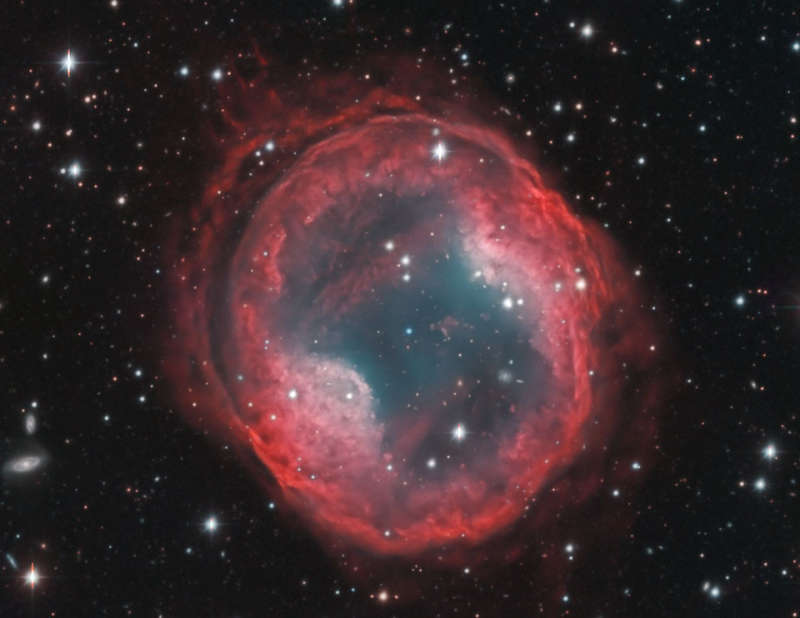 |
Астронет: Астрономическая картинка дня Планетарная туманность PK 164 31 http://variable-stars.ru/db/msg/1271762/eng |
Credit & Copyright: Descubre
Foundation,
CAHA,
OAUV,
DSA,
Vicent Peris (OAUV),
Jack Harvey (SSRO),
PixInsight
Explanation:
Is this what will become of our Sun?
Quite possibly.
The bubble of expanding gas
pictured above is the planetary nebula PK 164 +31.1, the remnants of the atmosphere
of a Sun-like star expelled as its supply of fusion-able core hydrogen became depleted.
Visible near the center of
the nebula is what remains of the core itself -- a blue-hot white dwarf star.
This particularly photogenic
planetary nebula shows
intricate shells of gas likely expelled at different times toward the end the star's
demise, and whose structure is not fully understood.
This deep image of PK 164 +31.1 from the
Calar Alto Observatory in
Spain shows many other stars from
our own
Milky Way Galaxy as well as
several galaxies far in the distance.
PK 164 +31, also known as
Jones-Emberson 1, lies about 1,600 light years away toward the constellation
of the Wildcat
(Lynx).
Due to its faintness
(magnitude 17) and
low surface brightness, the object is only visible with
a good-sized telescope.
Although the expanding nebula
will fade away over the next few thousand years, the
central white dwarf may well survive for billions of
years -- to when our universe may be a
very different place.
Authors & editors:
Robert Nemiroff
(MTU) &
Jerry Bonnell
(USRA)
NASA Web Site Statements, Warnings,
and Disclaimers
NASA Official: Jay Norris.
Specific
rights apply.
A service of:
LHEA at
NASA /
GSFC
& Michigan Tech. U.
